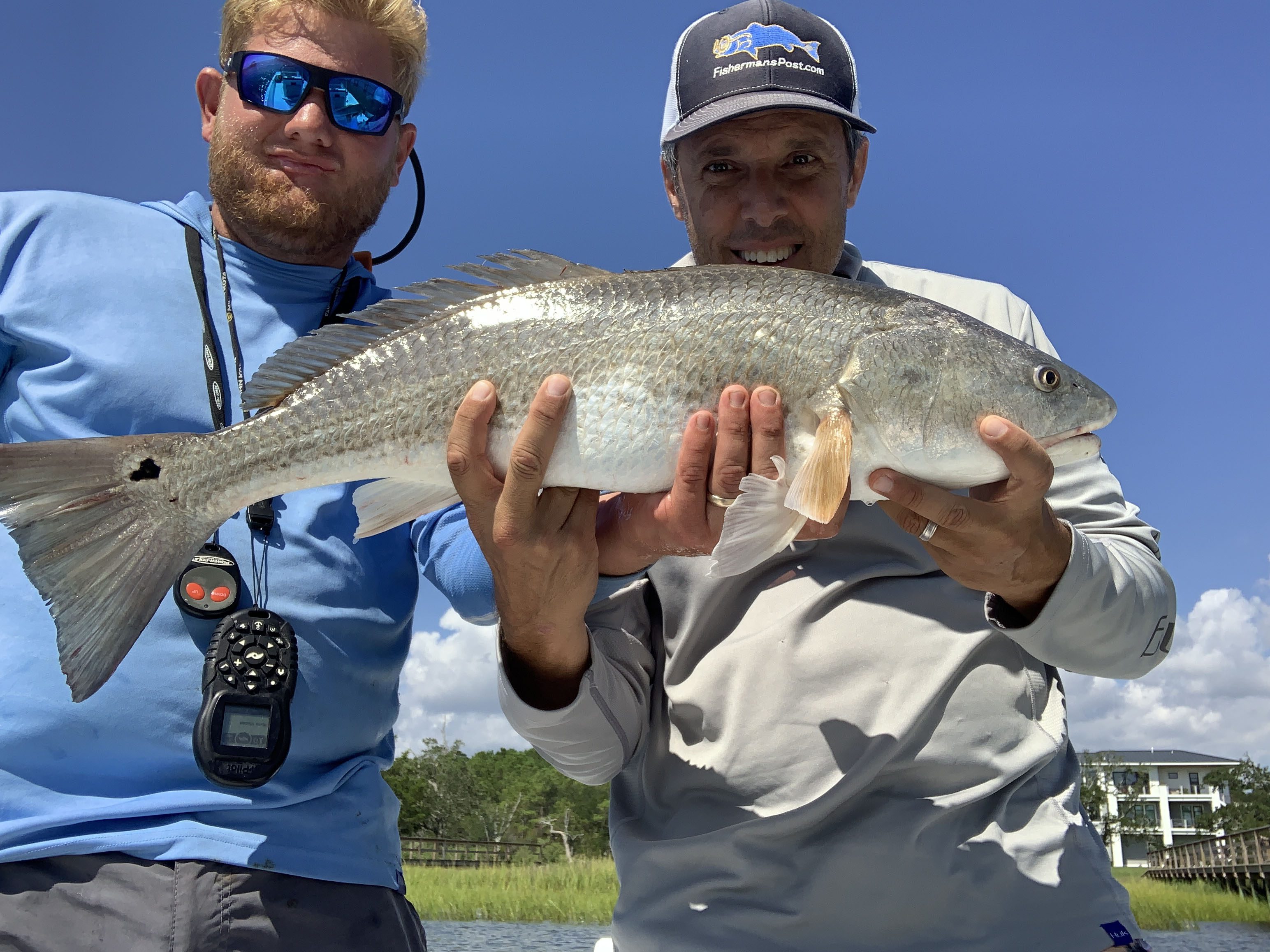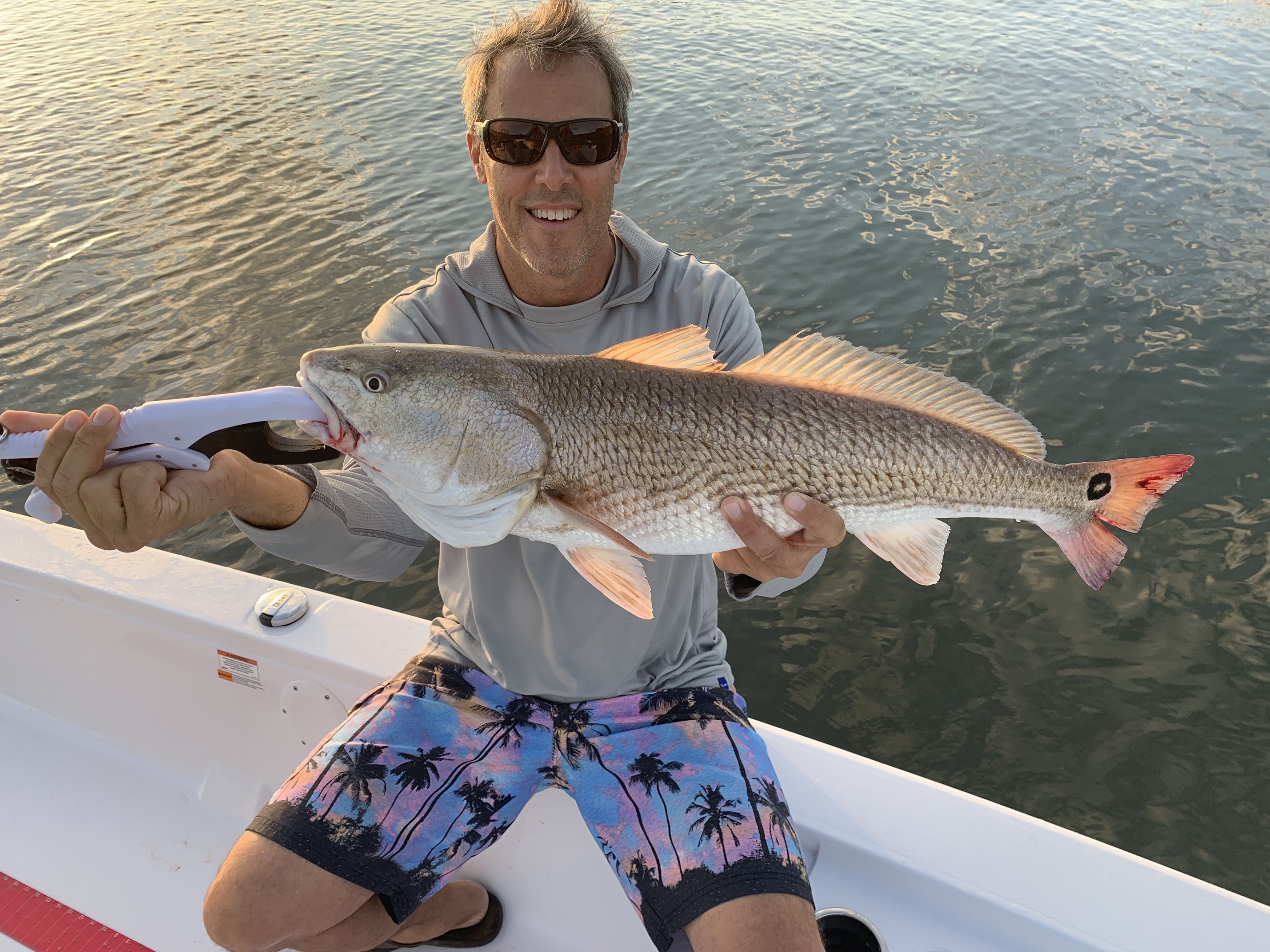Tidelines – September 12, 2019
The plan with Capt. Luke Moser, of Coastline Charters out of the Wrightsville and Carolina Beach areas, was to get in one last day of flounder fishing before the closure. We were both able to manipulate our schedules to free up the Friday of Labor Day weekend, and so we met at twilight at the Trails End boat ramp.
Our day started the way many flounder fishing trips do—throwing the cast net for some live bait. The early morning tide was a little higher than we wanted it to be, but still Luke felt confident that he could find some bait even though our targets had ample opportunity to find cover in all of the flooded grass.
That confidence wavered a bit, though, when Luke discovered that his trolling motor, which had worked perfectly just the day before on a charter, would respond to commands to turn left and right, but wouldn’t engage any thrust, forward or back.
Of course anglers have been able to, and many still do, catch live bait without a trolling motor, and so the simple solution was just to work a little bit harder for bait, targeting mullet on a couple of grass lines between docks, and finding our pogies in the deeper water close by the ramp.
The much bigger inconvenience of no trolling motor was that it took away our Plan A—to move up and down the entire lengths of several ICW docks, from grass shorelines out to the deeper water off the ends, casting in between and close to as many pilings as we could in search of hungry flatfish. Luke has found some of his best successes with flounder by covering as much of a dock as he can, from less than a foot of water off the shoreline all the way out to the 15+’ water depths that some of his favorite ICW docks feature, and he especially likes when he finds those small sloughs of water anywhere from 1/3 to 2/3 of the way down the dock.

Capt. Luke Moser (left), of Coastline Charters, and Gary Hurley, of Fisherman’s Post, with an over-slot red drum caught using a live mullet minnow on a jig head. They were targeting ICW docks near Wrightsville Beach.
With no trolling motor, Luke’s Plan B was to idle up to the shallower ends of docks, hold our position with his two Power-Poles, and then toss out a couple of live baits, letting the baits sit still in hopes that a late summer red drum would swim by.
Luke had a handful of standard Carolina rigs, but what he really likes, especially when red drum fishing, is putting a live bait straight on a jig head, and it was a mullet minnow on a jig head that he handed me and pointed to about the fourth piling from land and instructed me to put the bait as close to, if not under, the dock anywhere in that area.
Luke did the same to another area of the dock, and while we settled in to see if a resident redfish would soon cooperate, I reflected on how my flounder article had now become a red drum article. This new direction seemed fitting, as red drum would likely be the new direction of many a flounder angler in the coming months (years?).
Luke’s style when targeting docks for summer redfish isn’t to spend too much time at any one location, and so when the first spot generated nothing but a blue crab, we quickly moved to the other side of the dock. We were still in the shallow water, and maybe two minutes into this second soak, my rod took a deep bend.
My reel had been set to heavy drag, and this first fish of the day tested every bit of it. Dock fishing for reds is a little like grouper fishing, in that the first part of the fight is the key part of the fight, in this case getting the red away from the pilings before those pilings cut the line, and that big initial bite is often followed by a stalemate of a struggle, with neither side gaining any quick ground but rather doing a bit of back and forth.
It took a minute to get my drum away from the dock, and then it took a few more minutes to bring the fish to the boat and ultimately into the landing net, but the reward was a mostly-silver, 29” red drum. We took our photos, trying not to put anything identifiable in the background, released the fish, and then put our baits back out.
There wasn’t a second fish, so we moved on to the next dock, and that’s basically how our morning went. Just about every dock held at least one upper- to over-slot red drum, but we didn’t pull more than one red drum off any single dock.

Gary Hurley with an early morning over-slot red drum caught on a piece of cut bait. He was dock fishing in the Wrightsville Beach area with Capt. Luke Moser of Coastline Charters.
Our last fish of the morning before heading back to the ramp gave us the best visual of the day. A big red drum hit Luke’s mullet in about 2’ of water and immediately began thrashing the surface to throw the hook and/or cut the line. Those flashes of tail and head, as well as the pounding and spraying of water, had us both pumped up to see this fish in the boat, and Luke ultimately succeeded.
Luke’s new Sportsman is a well thought out, fully-functional fishing machine, and it’s also set up nicely to prop up a phone on top of the cushion mounted to the front of the console. We set the timer, and then took a photo with both of us, and the fish, in the shot.
Capt. Luke Moser, of Coastline Charters, is a dedicated angler. Flounder fishing is a passion of his, but then again so are red drum, trout, sheepshead, and just about any species in the inshore and nearshore waters of Wrightsville and Carolina Beach. You can check him out at www.facebook.com/coastlinechartersllc, or give him a call at (336) 214-1968.
Luke’s trolling motor has been fixed, and he is more than ready to locate red drum around docks, near the jetties, out in the ocean, up and down the Cape Fear riverbanks, back in the creeks, and anywhere else they may stage.
His flounder spots are now red drum spots, but those red drum are more than ready to step in and be hard-fighting, good-eating substitutes (temporary) for flounder.
